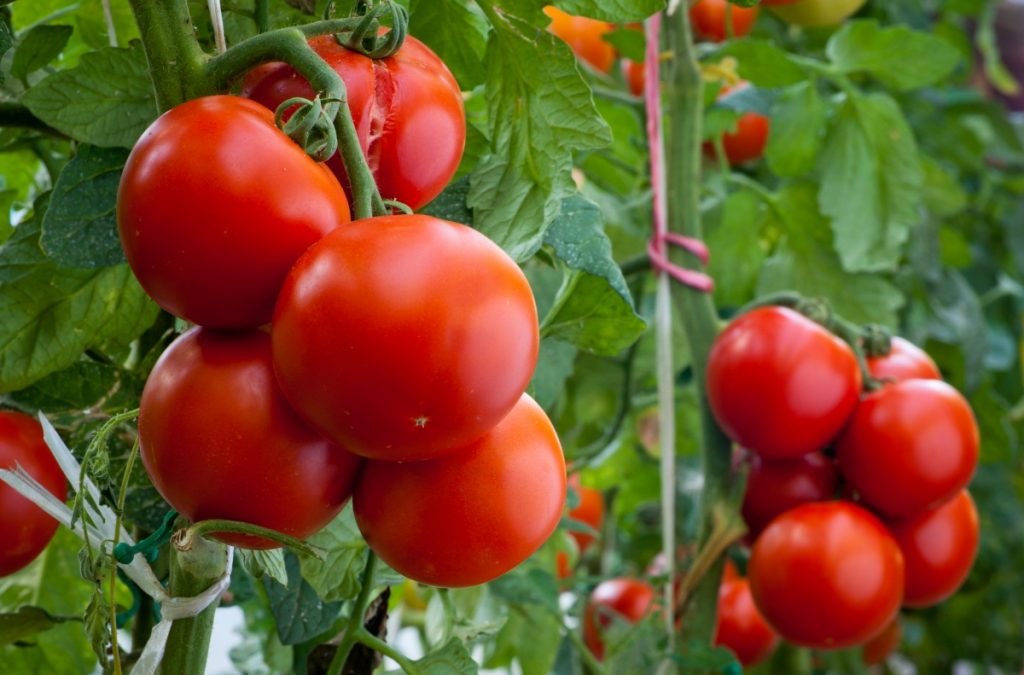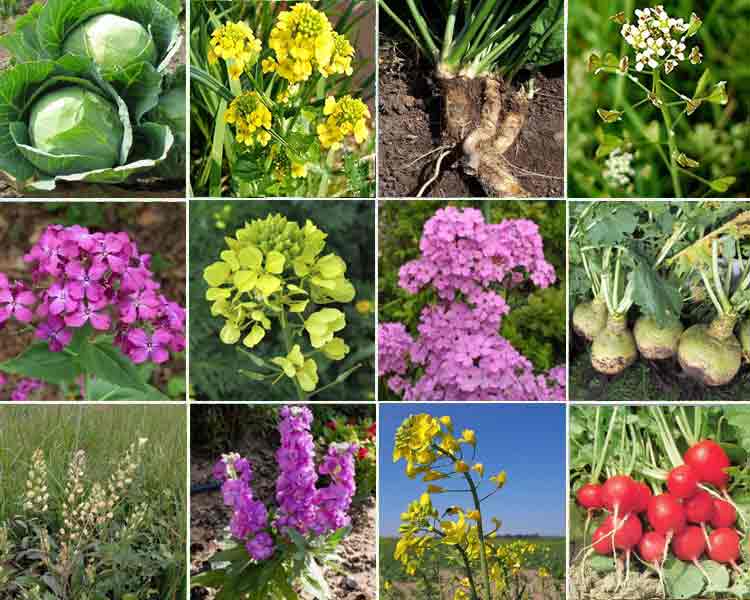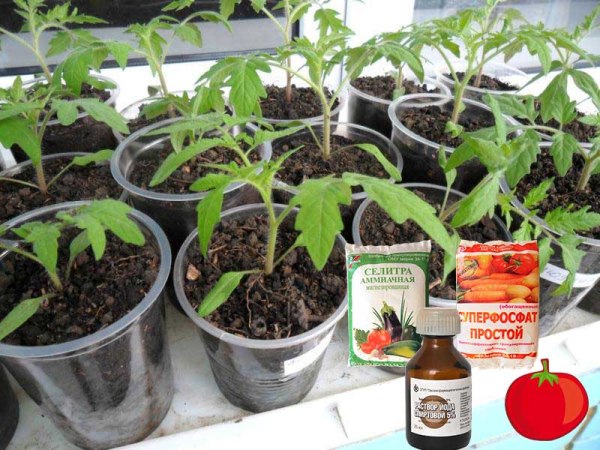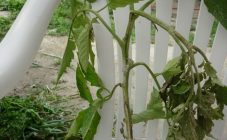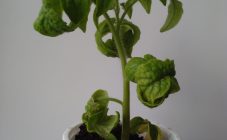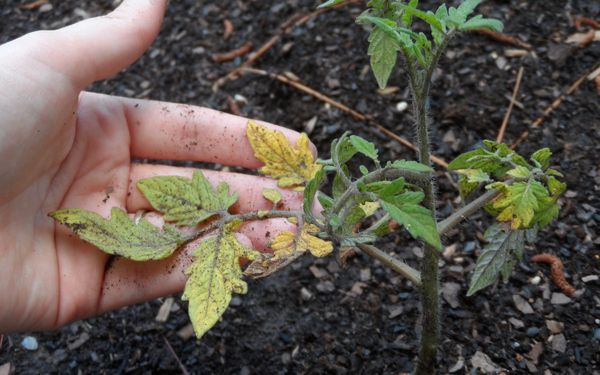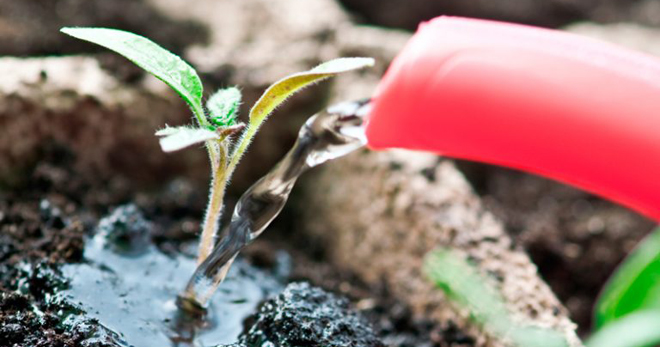Tomatoes today are a very popular vegetable grown in all Russian vegetable gardens. They contain many health benefits. This culture requires careful supervision. To get a good harvest, you will need to properly grow seedlings, move them into the ground or a greenhouse, feed, water and protect them from pests and diseases. In order for the tomatoes to grow well and give juicy and healthy fruits, experienced vegetable growers recommend feeding them with potassium humate.
Why is potassium humate useful for tomato seedlings
It is used to increase crop yields. This fertilizer is obtained from the remains of plants, peat, manure, lacustrine-silt extracts. Sometimes brown coal is also used for this fertilizer. Natural ingredients strengthen the plant and stimulate its growth.
Potassium humate contains a lot of potassium and phosphorus, it is also filled with humic acids and useful trace elements. It is considered beneficial for nightshades, potatoes and beets. Their growth improves, rhizomes are strengthened, productivity improves (in particular, taste and fruit size).
In addition, humic acids improve the condition of the land around the plant, develop microflora in the soil.
Most often used for root and foliar feeding. When fertilizing, you must strictly follow the instructions on the package, because an excessive amount of substances will not bring the best result.
When soaking the seeds, add 20 ml of the substance to a glass of water. The seeds are soaked for 24 hours so that they are disinfected. Cuttings can be processed for better rooting.
Watering tomatoes with this tool should be at the root for the entire growth period no more than three times (50 ml per bucket of water). In the same proportions, dilute the fertilizer for spraying foliage.
To restore the fertility of the land, you need to dilute 500 ml of the drug in 10 liters of water and after digging the site, water the soil abundantly.
The fertilizer has a variety - humate 7, containing all 7 trace elements useful during the growing season of the plant. Humate 7 microelements method of application for tomatoes through mixing with nitrogen and mineral supplements (for example, Barrel and 4 buckets).
The method of using humate 7 iodine for tomatoes differs in that it is recommended to make it exactly for two months (May-July). It strengthens the plant and makes it more resistant to disease.
There is another type of this fertilizer - Gumatem. It is used to control pests such as the Colorado potato beetle and aphids. They can fertilize not only tomatoes, but also potatoes and other cruciferous plants.
EcoOrganika potassium humate is a fertilizer to improve soil condition, but also promotes root development. Reduces the amount of heavy metals in the ground and nitrates in fruits.
Gera's humated fertilizer for tomatoes is often used as an analogue of potassium humate. Contains a set of trace elements to improve growth. Has the same properties as potassium humate for tomato seedlings.
With the help of this preparation it is possible to carry out microelement feeding of seedlings in a greenhouse, in home boxes, in the open field.
Its liquid state makes it possible to penetrate well into the soil and nourish it, the roots - to draw in all the useful substances and distribute well along the trunk. Convenient for foliar spraying. Does not block watering can holes.
Watering with this fertilizer is carried out three times with an interval of 14 days. It is best to start watering after planting the crop in the ground or greenhouse. Make the second fertilization when the buds begin to set. Water the crop for the last time at the time of flowering.The concentration of the fertilizer solution is a tablespoon for 10 liters of water.
Humate fertilizers are often used to process and improve the properties of composts. Due to the high availability of humic acids, the organic matter is accelerated and the compost matures faster. Fertilized soil with compost humus, with the addition of humate, will improve its health and improve the beneficial microflora.
When asked how this fertilizer affects tomato seedlings, we can answer that its introduction into young seedlings will not interfere with its growth, on the contrary, it will accelerate and strengthen the plant. But before applying fertilizer for young vegetation of a tomato, it is better to pay attention to the instructions on the package so as not to burn the still weak roots of the plant.
Compared to other fertilizers, potassium humate is used for many crops and garden trees, flowers and fruit plants. The drug has a complex effect: it increases growth, immunity, strengthens the roots, makes it more resistant to diseases, improves adaptation after moving into the ground, removes radionuclides and nitrates, promotes the appearance of beneficial microflora in the soil.
Folk remedies for fertilizing tomatoes
In addition to purchased drugs, you can also use fertilizers made by yourself. But you need to feed them after the seedlings have been moved to the garden. For self-prepared fertilizer solutions, slurry, mullein or chicken droppings are most often used. But not in pure form, but with the addition of small amounts of feeding preparations. Such mixtures have an excellent effect on the growth and development of the tomato.
It is best to prepare and apply nitrogenous or potash fertilizers. This is cow dung and nitrophoska mixed in a bucket of water.
Chicken droppings and potassium sulfate are also good feeds.
It is good to use fresh manure with yeast and ash (wood), mullein and boric acid infused in water for root irrigation.
While the plant is blooming, you can add an infusion of ash and water, mixed with potassium humate.
The easiest way to fertilize tomatoes is to mix yeast and sugar, and after three days of fermentation, add wood ash. The use of such baits gives a good tomato harvest and fills the plant with useful elements.
Any dressing must be applied carefully, in small quantities, so as not to burn the plant and its roots.
